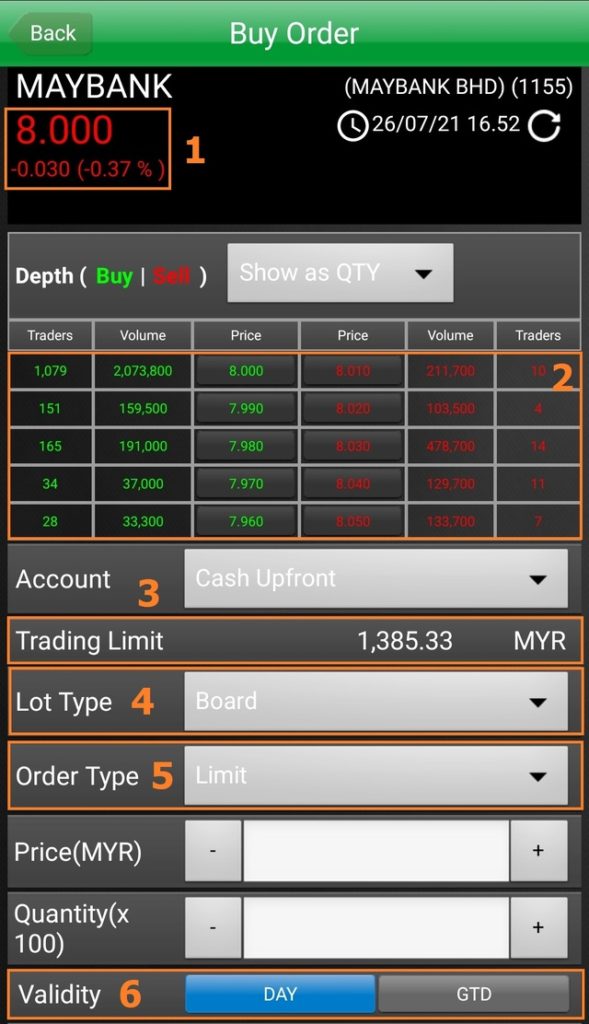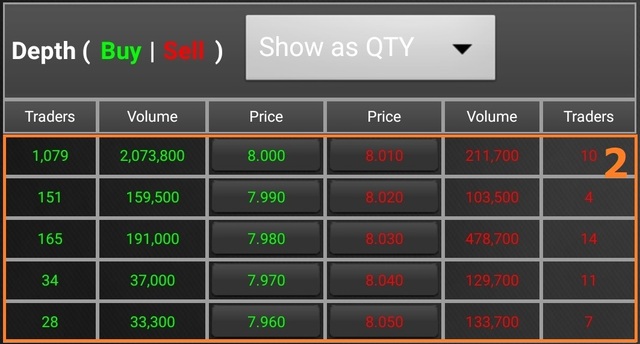You already have your brokerage account ready. But how to buy and sell stocks in Malaysia?
I still remember the first time when I wanted to buy a stock, I was clueless about how it works.
I was naive to think that buying shares is as easy as putting in the share price we want and we get it immediately. That’s not the case.
It took me at least a month to figure out how stock trading really works. Partly because there isn’t a guide that shares the details of how to buy and sell stocks for beginners in Malaysia.
Therefore, I decided to write this article to explain how share trading works, technically. So you all won’t face the same confusion as me.
Disclaimer:
I am not a licensed financial advisor. The information provided is based on my knowledge and findings, which are purely for education purposes. Please always do your own due diligence before investing your money.
How Shares are Traded in the Market?

The shares in the stock market are traded in a bidding system. The buyers have to place buy orders known as “bids”, while the sellers will place sell orders known as “asks”.
When both bid and ask are matched at price, the buyer gets the shares while the seller will get the cash.
To understand it more, you may check out the comic by Nixon Siow on “What is a Stock Market”
How to Buy Stocks with Rakuten Trade
Now, let us get into the technical part of how stock trading works.

Since I always recommend Rakuten Trade for new stock investors, I will use it as a guide. (You can register with my referral link below to get instant 1000 RT Points, equivalent to RM10 rebate on brokerage fees)
1) Current Share Price
While this is self-explanatory, the current share price is part of the buy or sell order interface. This price will probably change when you are trading during the market open.
2) Market Depth

Market depth lists out all the bids (green) and asks (red). There are 3 columns for each section:
- Price – The bid/ask price the traders placed
- Volume – The number of shares that the traders wish to bid/ask at that price
- Traders – Number of traders that placed the total bids/asks
How to interpret this thing? Let us look at some examples.
Example 1: If you wish to buy 500 shares of Maybank at RM8, and you place a bid. After you successfully placed the order, your buy order will be in the queue. You can observe the bid price of RM8 will increase its volume from 2,073,800 to 2,074,300, and the number of traders will become 1,080.
Example 2: Let say you place a sell order to sell 500 shares of Maybank at RM8.02. Your sell order will be in the queue. At the ask section, you will observe the asking price of RM8.02 will increase its volume to 104,000 and the number of traders will become 5.
Example 3: If you place a buy order of 500 shares of Maybank at RM8.01, then your order will be matched immediately. This is because 211,700 shares are selling at RM8.01 by 10 traders. You will then observe the asking price of RM8.01 will decrease its volume to 211,200.
From the screenshot above, there are 5 rows of prices in the market depth. We called it 5 tiers or 5 levels. Most brokerage apps only provide 3 levels of market depth. But Rakuten Trade provides 5 levels for free in the first 3 months.
Here is the link for T&C for Rakuten Trade’s Market Depth Subscription if you are interested to read more.
3) Trading Limit
Trading Limit shows how much cash is available for you to buy stocks. If you place a buy order that exceeds the trading limit, the order will be rejected.
4) Lot Type
In Rakuten, Lot Type has 2 options: Board and Odd. Usually, stocks in Bursa are traded in lots (1 lot = 100 units).
When we choose “Board”, we trade stocks in “lots”. If we choose “Odd”, we will buy stocks in “units”. The stocks that are not traded in lots are usually called odd lots.
5) Order Type
To trade a stock, there are 2 types of order: Limit or Market.
To place a Limit Order, we must set a price. Our order will be matched when the stock price hits our target.
A Market Order is matched immediately when we place the order. Because it will buy/sell whatever price is offered in the market.
Limit Order is mostly used by investors as we get to buy or sell at the price we desire.
6) Validity
Validity is the period of your order last.
If you put “Day”, it means your order is active for today only, and it will be removed on the next day.
If you chose “GTD” (Go To Date), you will need to choose a date that your order is last valid. For example, today is 21st August and you set 20th September as your GTD. Hence your order will be active until 20th September and disappear on 21st September.
How to Sell Stocks with Rakuten Trade

Sell orders are very similar to buy orders. You will find the same settings with lot type, order type, validity and etc.
What is Partial Matched Means
When our order is matched but not all units are being bought or sold, that is known as partial matched.
Usually a huge order such as a buy order that costs more than RM50,000, there will be a chance that our order will be matched partially.
For example, if we place a buy order on Maybank stock at RM8 per share, for 100 lots (10,000 units). At the end of the day, only 50 lots of our order is matched. Our order will be shown as “Partial Matched” and the rest of the order will be renewed the next day (If we chose GTD).
Partial matched order is not fun because we need to pay the brokerage fees more than once. This is because our order has been split into two or more orders.
But there’s nothing we can do about it, especially if we place a huge order or buying shares with low trading volume.
My Best Practice for Placing Order
For lot type, it’s a no-brainer. I always choose Broad (in Rakuten Trade). You don’t want to have any odd lot because its liquidity is super low and you can hardly sell it for a good price. It’s a different story if you receive odd lots from a dividend reinvestment plan though.
As a rule of thumb, I will only place Limit orders. With that, I have control over the share price that I want to trade.
For validity, I often choose GTD for the longest period (maximum 1 month). You probably don’t want your order to last only for 1 day and disappear the next day, unless you have other reasons to do so.
Which Price Should I Buy In
Well, I bet many of you will ask this question when we talk about how to buy or sell stocks in Malaysia.
For simplicity, I will not go into much detail. I will give you some basic steps that you can follow as a beginner.
Before I share these steps, here are the assumptions:
- The business behind this stock is a quality business that will be profitable in the long run. (Please do your homework)
- You will buy and hold the stock for the long-term (minimum 3 years)
- You understand that you may lose money from the stock market.
- For the (buy) action that you will commit, you will bear any responsibilities from it.
- These steps are not for everyone, but they might work for you.
So now we are clear with the assumptions, let’s jump right into the steps to buy a stock (with a reasonable price)
- Open the KLSE Screener app and search for the stock you are interested in.
- Check the historical share price within 30 days and tap on the button “30 Days historical prices”.
- Find the lowest price in the “Low” column, and place your buy order with that price.
Super easy right? This is how I buy most of my shares. No hard feeling if you think it doesn’t make sense.
Verdict
As a beginner, buying stocks for the first time seems like operating a flight control unit. But once you understand them, they are actually simple to use.
Hopefully, this guide can be helpful for you, especially if you’re still new to stock investing.
If you want to get started on your stock investing journey, I recommend Rakuten Trade for its simplicity and intuitive interface.
If you are interested to open a Rakuten Trade account, use my referral link below to get instant 1000 RT Points, equivalent to RM10 rebate on brokerage fees.
Disclosure:
The affiliate link you use may give me some commissions (which are used to support this blog) with no additional cost to you.


Thank you for simple beginner-friendly explanations
You’re welcome! 🙂
Thanks Marcus, your explainatory articles for beginner is the best! Thankyou!
Thanks for your compliment! 🙂